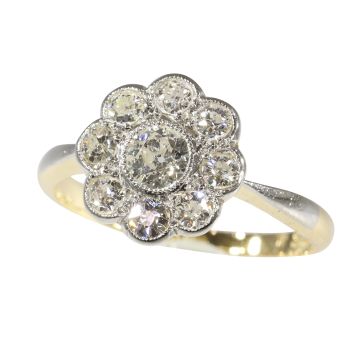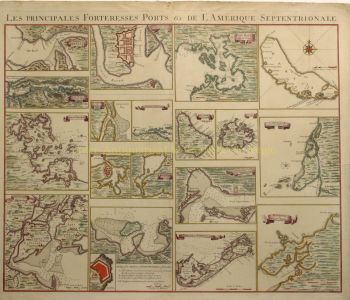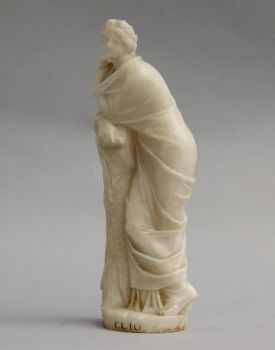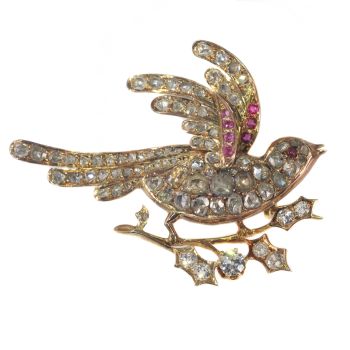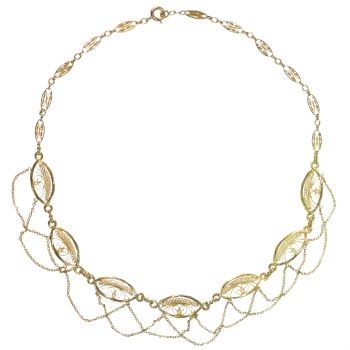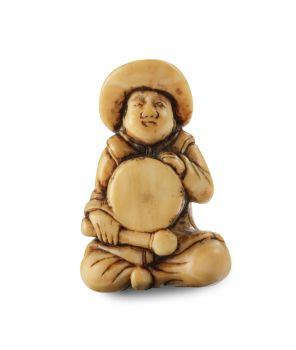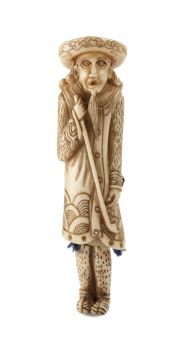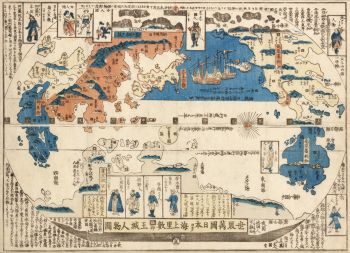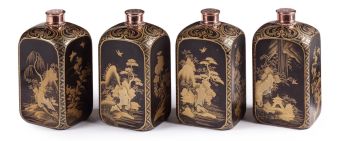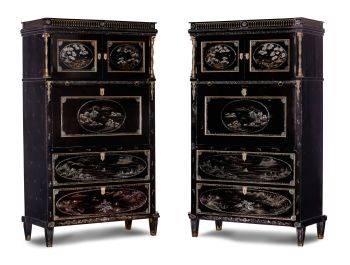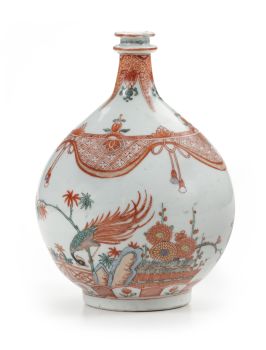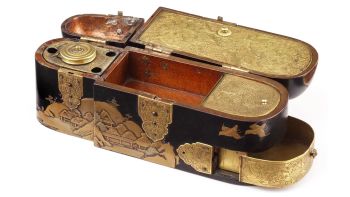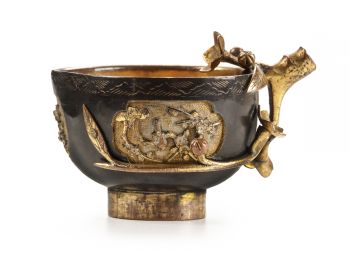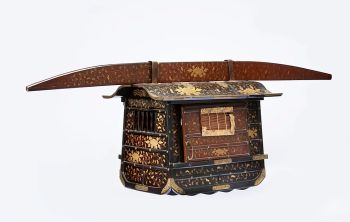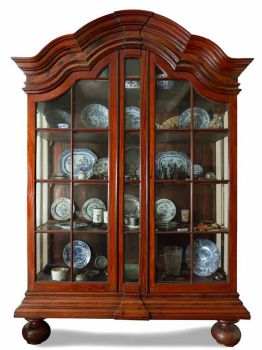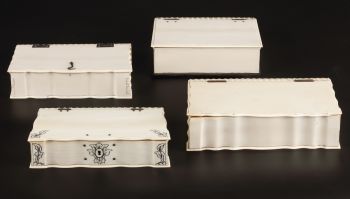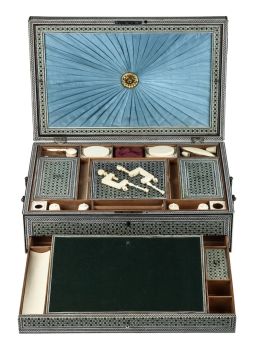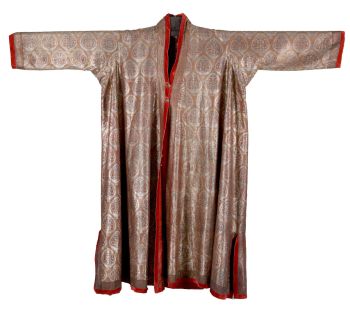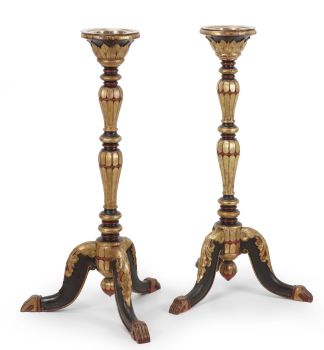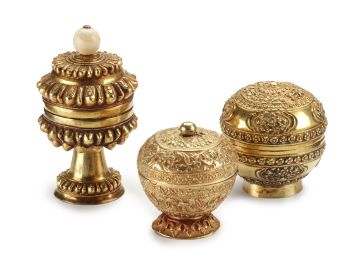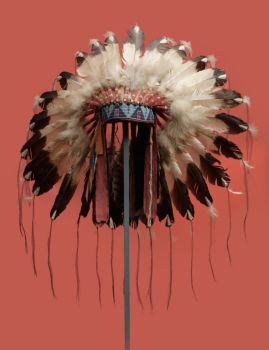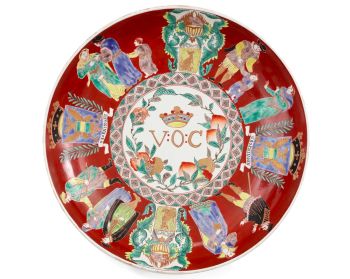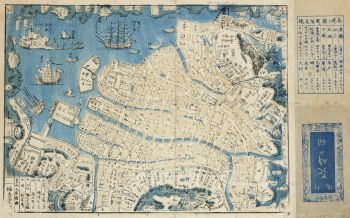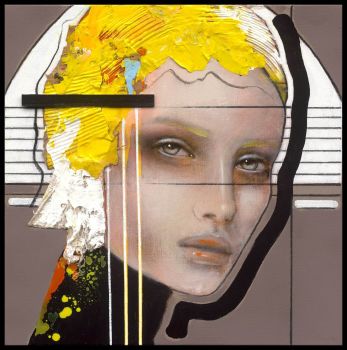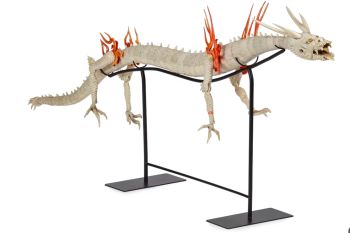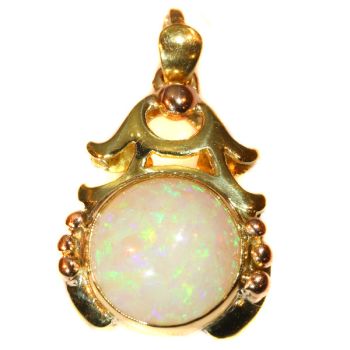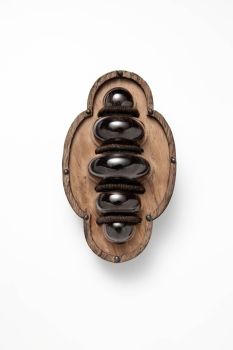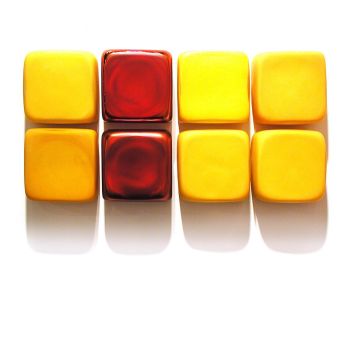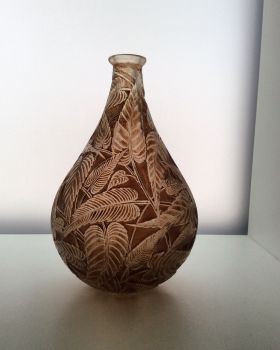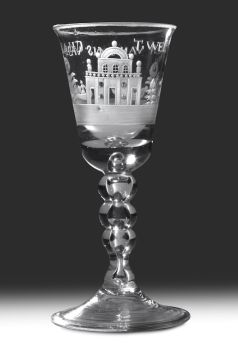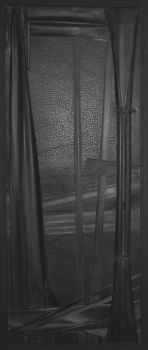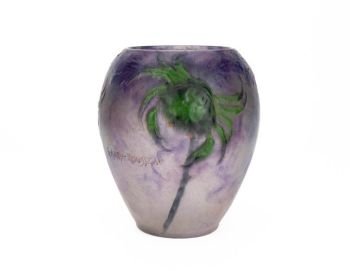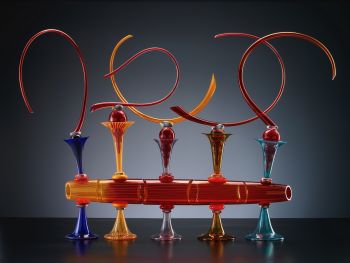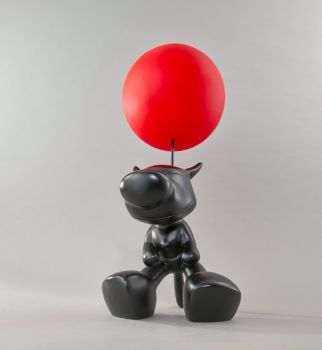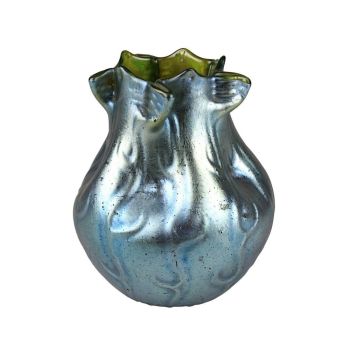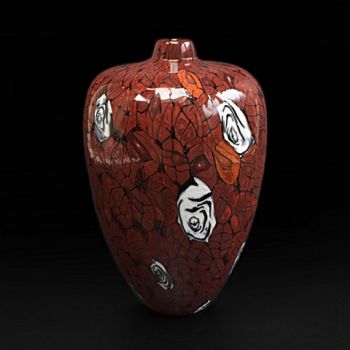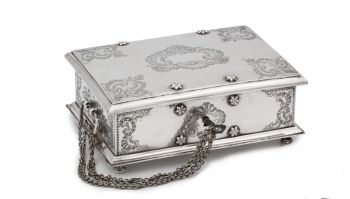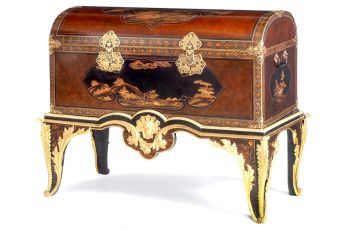UM TELESCÓPIO DE VIDRO JAPONÊS EXTREMAMENTE RARO COM CAIXA DE COURO LACADA 1900
Artista Desconhecido
Zebregs & Röell - Fine Art - Antiques
- Sobre arteAN EXTREMELY RARE JAPANESE GLASS TELESCOPE WITH LACQUERED LEATHER CASE
Edo period, late 18th/early 19th century
The telescope is decorated in various colours and gilt with flowers, foliage and geometric designs over and beneath the glass that is finely wheel-engraved, the glass sections separated by silverwork and copper rims, the cylindrical case of lacquered leather and paper is impressed with European style ornaments and applied with gold and lacquer.
Length of telescope: 56.7 cm
Length of case: 68.3 cm
Literature:
Suntory Museum of Art, exhibition catalogue Japanese glass: Stylish vessels, playful shapes, Tokyo, 2010, no. 18 (ill.)
Exhibitions:
Suntory Museum of Art, Japanese glass: Stylish vessels, playful shapes, 27 March - 23 May 2010
Note:
It is believed that the telescope was first imported to Japan as a gift from King James I (1566-1625) in 1613 to the Shogun Tokugawa Ieyasu (1543-1616) who made well use of his telescope during his battles. Since then many of the country rulers asked the representatives of the Dutch East India Company on Dechima for telescopes as tributes. Sometime after the seclusion policy was executed in 1641, the making of telescopes started in Japan, mainly in Nagasaki where the Dutch had their factory on the island of Deshima. The best-known opticians during the Edo Period were Mori Nizaemon (1673-1754) of Nagasaki and Iwahashi Zenbei (1756-1811) of Osaka. - Sobre artista
Pode acontecer que um artista ou criador seja desconhecido.
Algumas obras não devem ser determinadas por quem são feitas ou são feitas por (um grupo de) artesãos. Exemplos são estátuas dos tempos antigos, móveis, espelhos ou assinaturas que não são claras ou legíveis, mas também algumas obras não são assinadas.
Além disso, você pode encontrar a seguinte descrição:
•"Atribuído a …." Na opinião deles, provavelmente uma obra do artista, pelo menos em parte
• “Estúdio de…” ou “Oficina de” Em sua opinião um trabalho executado no estúdio ou oficina do artista, possivelmente sob sua supervisão
• "Círculo de ..." Na opinião deles, uma obra da época do artista mostrando sua influência, intimamente associada ao artista, mas não necessariamente seu aluno
•“Estilo de…” ou “Seguidor de…” Na opinião deles, um trabalho executado no estilo do artista, mas não necessariamente por um aluno; pode ser contemporâneo ou quase contemporâneo
• "Maneira de ..." Na opinião deles, uma obra no estilo do artista, mas de data posterior
•"Depois …." Na opinião deles uma cópia (de qualquer data) de uma obra do artista
• “Assinado…”, “Datado…” ou “Inscrito” Na opinião deles, a obra foi assinada/datada/inscrita pelo artista. A adição de um ponto de interrogação indica um elemento de dúvida
• "Com assinatura ….”, “Com data ….”, “Com inscrição ….” ou “Tem assinatura/data/inscrição” na opinião deles a assinatura/data/inscrição foi adicionada por outra pessoa que não o artista
Você está interessado em comprar esta obra de arte?
Artwork details
Related artworks
- 1 - 4 / 12
Artista Desconhecido
The Stamford Raffles Secretaires.1800 - 1813
Preço em pedidoZebregs & Röell - Fine Art - Antiques
Artista Desconhecido
Set Arita 'dog training' plates, 18th century 1700 - 1730
Preço em pedidoVerkoulen Oriental & European Antiques
Artista Desconhecido
A Japanese bronze Hu flower vase, Edo / Meiji, 19th century19th century
Preço em pedidoMenken Works of Art
1 - 4 / 22Artista Desconhecido
The Stamford Raffles Secretaires.1800 - 1813
Preço em pedidoZebregs & Röell - Fine Art - Antiques
Artista Desconhecido
Indian colonial inlaid work box, 18th century1700 - 1750
Preço em pedidoVerkoulen Oriental & European Antiques
Artista Desconhecido
UM MODELO JAPONÊS DE UM NORIMONO, UM PALANQUIM1650 - 1700
Preço em pedidoZebregs & Röell - Fine Art - Antiques
Artista Desconhecido
A Japanese bronze Hu flower vase, Edo / Meiji, 19th century19th century
Preço em pedidoMenken Works of Art
1 - 4 / 24- 1 - 4 / 24
Gabriel Argy-Rousseau
Gabriël Argy-Rousseau – Crabes et Algues vase – 19201920 - 1929
Preço em pedidoAntiques Emporium
1 - 4 / 24Artista Desconhecido
The bell of the VOC fortress in Jaffna, Sri Lanka1747
Preço em pedidoZebregs & Röell - Fine Art - Antiques
 Com curadoria de
Com curadoria deDanny Bree
Artista Desconhecido
A Surinam-themed Amsterdam long-case clock1746 - 1756
Preço em pedidoZebregs & Röell - Fine Art - Antiques
 Com curadoria de
Com curadoria deGallerease Magazine
Artista Desconhecido
Japanese transition-style lacquer coffer 1640 - 1650
Preço em pedidoZebregs & Röell - Fine Art - Antiques
1 - 4 / 12


